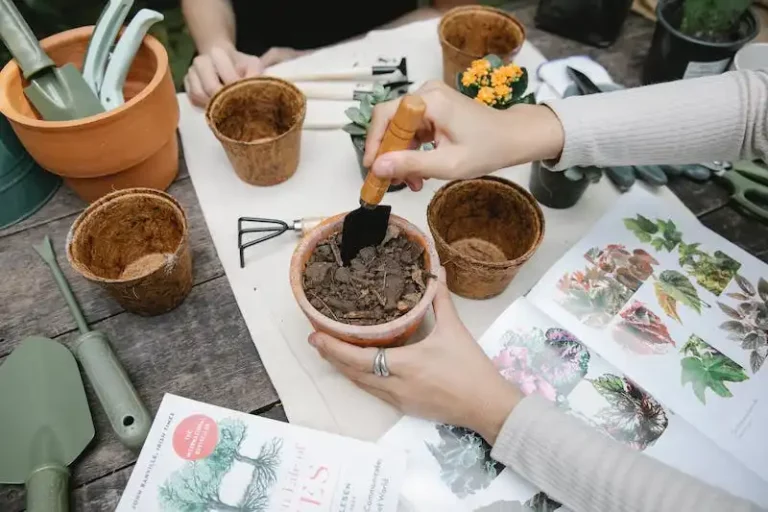If you’re a gardener looking to add some color and fragrance to your garden, you might want to consider heliotrope. Heliotrope, or heliotropium as it is known by its botanical name, is a beautiful flowering plant that is loved for its vanilla-scented blooms. It is a hardy annual that is easy to grow, making it a great choice for both novice and experienced gardeners.
Heliotropes are native to temperate regions and can tolerate a wide range of conditions. They prefer full sun but can also tolerate some shade, making them versatile plants for landscaping. They are known for their mounding growth habit, with a height spread of about 2 feet. The plants have small, dark green leaves that are scented like licorice.
When it comes to planting heliotropes, the key is to provide them with well-drained soil. They don’t like overwatering, so make sure the soil is slightly dry between watering. Heliotropes are also sensitive to frost, so it is best to plant them in the spring when all danger of frost has passed. They can also be grown from seeds, which are tiny and should be planted just below the soil surface.
Heliotropes are known for their long blooming period, which lasts from spring to early fall. To encourage continuous flower production, it is important to deadhead the spent flowers. This will also prevent the plant from setting seed and increase its overall vigor. If you’re growing heliotropes in containers, make sure the containers have good drainage holes and use a well-draining potting mix.
How to Grow and Care for Heliotropes
Heliotropes, scientifically known as Heliotropium, are a wonderful addition to any garden. These flowering perennials are a part of the Boraginaceae family and are highly valued for their fragrant blooms and vibrant colors.
If you’re wondering how to grow and care for heliotropes, here are some tips:
- Growing Zones: Heliotropes are usually grown in Zones 9 to 11, but they can also be grown in cooler zones as annuals or brought indoors during winter.
- Exposure: Heliotropes prefer full sun or afternoon shade. They thrive in areas with warm temperatures.
- Soil: Heliotropes prefer well-draining soil that has been amended with organic matter. Ensure the soil is moist but not waterlogged.
- Watering: Heliotropes need regular watering, especially during dry periods. Water the plants at the base to avoid wetting the leaves, as this can promote fungal diseases.
- Humidity: Heliotropes enjoy high humidity levels, so misting the leaves can help create a humid environment.
- Fertilizer: Use a balanced fertilizer once a month during the growing season to promote healthy growth and abundant blooms.
- Propagation: Heliotropes can be grown from seeds or cuttings. Seeds should be planted indoors about eight to ten weeks before the last frost date. Cuttings can be taken in spring or early summer.
- Pests and Diseases: Heliotropes are generally resistant to most pests and diseases. However, keeping an eye out for common garden pests like aphids or spider mites is always a good idea.
- Companion Plants: Heliotropes make excellent companions for other sun-loving plants such as lantana or Victoria blue salvia. Their colors and growth habits complement each other well.
- Deadheading: To encourage continuous blooming, remove faded flowers by deadheading. This will help redirect the plant’s energy to produce more blooms.
- Winter Care: In colder zones, heliotropes should be planted as annuals or brought indoors during winter. Provide them with bright light and water sparingly.
Heliotropes are named after the Greek words “helios” and “tropos,” which means “sun” and “turn,” respectively. This name refers to the plant’s ability to turn its flowers towards the sun.
In conclusion, heliotropes are easy-to-grow, highly fragrant flowers that add beauty and color to any garden. By following the basic care instructions outlined above, you can enjoy these lovely flowers year after year.
Heliotropes Care
Heliotropes can be a beautiful addition to any garden. With their highly fragrant vanilla-licorice scent and vibrant colors, these flowers are sure to attract attention.
Here are some tips on how to care for your heliotropes:
- Choosing the right location: Heliotropes prefer full sun but can tolerate some afternoon shade in hotter areas. Plant them in a location where they will get at least 6 hours of direct sunlight each day.
- Preparing the soil: Heliotropes thrive in well-draining soil that is rich in organic matter. Before planting, amend the soil with compost or other organic amendments to improve its fertility and drainage.
- Watering: Water your heliotropes regularly to keep the soil evenly moist. Avoid overwatering, as this can lead to root rot. In winter, reduce watering to prevent waterlogged soil.
- Pruning and deadheading: To encourage bushier growth and more blooms, pinch back the tips of the stems when the plant is about 6 inches tall. Deadhead the flowers regularly to promote continuous blooming.
- Protecting from frost: Heliotropes are sensitive to frost and cold temperatures. In colder zones, treat them as annuals or bring them indoors before the first frost. In warmer areas, cover the plants with a frost cloth or move them to a protected location.
- Companion plants: Heliotropes pair well with other annuals or perennials, such as helichrysum or Victoria blue salvia. These companions can enhance the color and height/spread of your garden.
- Dealing with diseases: Heliotropes can sometimes be susceptible to diseases, such as powdery mildew or leaf spot. To prevent these issues, avoid overhead watering and provide good air circulation around the plants.
- Seeding: Heliotropes can be grown from seed, but they are slow to germinate. Start the seeds indoors in early spring, and transplant the seedlings outside after the last frost date.
By following these care tips, you can enjoy the beauty and fragrance of heliotropes in your garden for a long time. So, why not spruce up your garden with these lovely flowers?
HOW TO GROW HELIOTROPE FLOWERS IN YOUR GARDEN
Heliotropes, also known by their botanical name Heliotropium arborescens, are wonderful plants to grow in your garden. With their fragrant flowers and attractive foliage, they add color and interest to any outdoor space. Here are some quick ideas for growing heliotrope flowers in your garden.
Planting: Choose a well-draining soil that is rich in organic matter. Heliotropes prefer soil amendments such as compost or aged manure. They grow best in temperate zones but can also be grown in colder areas as annuals or as potted plants that can be brought indoors during the cooler months.
Water: Heliotropes are moderately resistant to heat and humidity, but they require regular watering. Be careful not to overwater, as this can lead to root rot. Water the plants deeply and allow the soil to dry slightly before watering again.
Light Exposure: Heliotropes thrive in full sun, but they can also tolerate some afternoon shade in hotter climates. They need at least 6 hours of sunlight each day to promote healthy growth and flowering.
Pruning and Deadheading: To keep heliotropes in tidy habit and encourage continuous flowering, it is important to regularly prune and deadhead the plants. Pinch back the stems to promote bushier growth and remove spent flowers to prolong the flowering period.
Height and Spread: Heliotropes typically grow to a height of 1 to 3 feet, with a spread of about 1 to 2 feet. They have a compact growth habit, making them suitable for borders, edging, or mass planting.
Fertilizer: Heliotropes benefit from regular feeding with a balanced fertilizer. Use a 10-10-10 fertilizer or a slow-release granular fertilizer according to the package instructions to promote healthy growth and abundant flowering.
Companion Plants: Heliotropes can be grown alongside other plants such as licorice vine, Victoria blue salvia, and tiny plants like pansies and lobelias to create a colorful and fragrant garden bed.
Deer Resistance: Heliotropes are highly deer resistant, making them a great choice for gardens in deer-prone areas.
Growing heliotropes in your garden can add a pop of color and a wonderful vanilla fragrance to your outdoor space. With the right care, these beautiful flowers will thrive and provide enjoyment for any gardener.
| Common Name: | Heliotrope |
| Botanical Name: | Heliotropium arborescens |
| Plant Type: | Tender perennial |
| Hardiness Zones: | 9-11 |
| Exposure: | Full sun to part shade |
| Height: | 1-3 feet |
| Spread: | 1-2 feet |
| Colors: | Various shades of purple and blue |
| Perfume: | Fragrant, vanilla-like |

